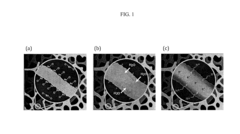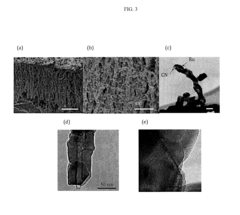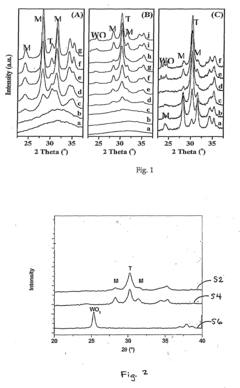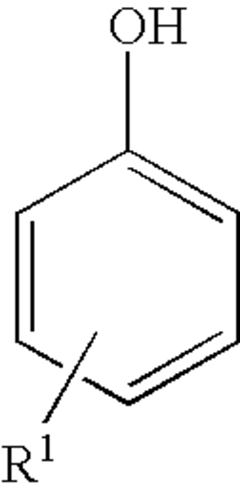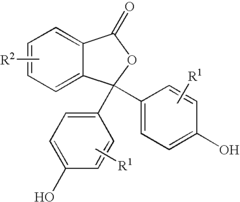Phenolphthalein-Inspired Molecular Designs for Supercapacitors
JUL 24, 20259 MIN READ
Generate Your Research Report Instantly with AI Agent
Patsnap Eureka helps you evaluate technical feasibility & market potential.
Phenolphthalein-Inspired Supercapacitor Design Goals
The development of phenolphthalein-inspired molecular designs for supercapacitors aims to revolutionize energy storage technology by leveraging the unique properties of this well-known pH indicator. The primary goal is to create high-performance electrode materials that can significantly enhance the energy density and power density of supercapacitors while maintaining their excellent cycling stability and rapid charge-discharge capabilities.
One of the key objectives is to exploit the redox-active nature of phenolphthalein-derived molecules to increase the pseudocapacitance of the electrode materials. By incorporating these molecules into the electrode structure, researchers aim to achieve a higher specific capacitance compared to traditional carbon-based electrodes, which rely primarily on electric double-layer capacitance.
Another crucial design goal is to optimize the molecular structure of phenolphthalein derivatives to improve their conductivity and electron transfer properties. This involves modifying the core structure of phenolphthalein to enhance its electronic properties while maintaining its redox activity. The ultimate aim is to create a highly conductive network that facilitates rapid charge transport within the electrode material.
Researchers are also focusing on developing strategies to immobilize phenolphthalein-inspired molecules onto various substrate materials, such as carbon nanotubes, graphene, or conductive polymers. This integration aims to create composite materials that combine the high surface area and conductivity of the substrate with the pseudocapacitive properties of the phenolphthalein derivatives.
Improving the stability of phenolphthalein-inspired materials in different electrolytes is another critical objective. This involves designing molecular structures that are resistant to degradation during repeated charge-discharge cycles and can maintain their electrochemical performance over extended periods.
Furthermore, the research aims to explore the potential of phenolphthalein-inspired materials in flexible and wearable supercapacitors. This requires developing electrode materials that can maintain their performance under mechanical stress and can be integrated into various form factors.
Lastly, an overarching goal of this research is to develop environmentally friendly and cost-effective supercapacitor materials. By utilizing phenolphthalein, a relatively inexpensive and non-toxic compound, as the starting point for molecular design, researchers hope to create sustainable energy storage solutions that can be easily scaled up for commercial applications.
One of the key objectives is to exploit the redox-active nature of phenolphthalein-derived molecules to increase the pseudocapacitance of the electrode materials. By incorporating these molecules into the electrode structure, researchers aim to achieve a higher specific capacitance compared to traditional carbon-based electrodes, which rely primarily on electric double-layer capacitance.
Another crucial design goal is to optimize the molecular structure of phenolphthalein derivatives to improve their conductivity and electron transfer properties. This involves modifying the core structure of phenolphthalein to enhance its electronic properties while maintaining its redox activity. The ultimate aim is to create a highly conductive network that facilitates rapid charge transport within the electrode material.
Researchers are also focusing on developing strategies to immobilize phenolphthalein-inspired molecules onto various substrate materials, such as carbon nanotubes, graphene, or conductive polymers. This integration aims to create composite materials that combine the high surface area and conductivity of the substrate with the pseudocapacitive properties of the phenolphthalein derivatives.
Improving the stability of phenolphthalein-inspired materials in different electrolytes is another critical objective. This involves designing molecular structures that are resistant to degradation during repeated charge-discharge cycles and can maintain their electrochemical performance over extended periods.
Furthermore, the research aims to explore the potential of phenolphthalein-inspired materials in flexible and wearable supercapacitors. This requires developing electrode materials that can maintain their performance under mechanical stress and can be integrated into various form factors.
Lastly, an overarching goal of this research is to develop environmentally friendly and cost-effective supercapacitor materials. By utilizing phenolphthalein, a relatively inexpensive and non-toxic compound, as the starting point for molecular design, researchers hope to create sustainable energy storage solutions that can be easily scaled up for commercial applications.
Market Demand Analysis for Advanced Supercapacitors
The market demand for advanced supercapacitors has been experiencing significant growth in recent years, driven by the increasing need for high-performance energy storage solutions across various industries. This demand is particularly pronounced in sectors such as automotive, consumer electronics, renewable energy, and industrial applications.
In the automotive industry, the shift towards electric and hybrid vehicles has created a substantial market for supercapacitors. These devices complement traditional batteries by providing rapid charge and discharge capabilities, essential for regenerative braking systems and power smoothing in electric powertrains. The global electric vehicle market is projected to grow at a CAGR of over 20% in the coming years, directly influencing the demand for advanced supercapacitors.
Consumer electronics represent another key market segment for supercapacitors. With the growing trend of miniaturization and increased functionality in portable devices, there is a rising need for compact, high-performance energy storage solutions. Supercapacitors offer rapid charging times and long cycle life, making them ideal for applications such as smartphones, wearables, and laptops.
The renewable energy sector is also driving demand for advanced supercapacitors. As the world transitions towards cleaner energy sources, the need for efficient energy storage systems to manage intermittent power generation from solar and wind sources has increased. Supercapacitors play a crucial role in grid stabilization and energy management systems for renewable power plants.
Industrial applications form another significant market for supercapacitors. They are increasingly used in heavy machinery, cranes, and material handling equipment for power buffering and energy recovery. The ability of supercapacitors to handle high power densities and frequent charge-discharge cycles makes them particularly suitable for these applications.
The market demand for phenolphthalein-inspired molecular designs in supercapacitors is part of a broader trend towards developing more efficient and sustainable energy storage solutions. These novel designs offer the potential for enhanced performance characteristics, including higher energy density, improved cycle life, and faster charging capabilities. As industries seek to improve the overall efficiency and sustainability of their energy systems, the demand for such innovative supercapacitor technologies is expected to grow.
Furthermore, the increasing focus on environmental sustainability and the push for greener technologies are driving research and development in bio-inspired and eco-friendly supercapacitor materials. Phenolphthalein-inspired designs align with this trend, potentially offering more sustainable alternatives to traditional supercapacitor materials.
In the automotive industry, the shift towards electric and hybrid vehicles has created a substantial market for supercapacitors. These devices complement traditional batteries by providing rapid charge and discharge capabilities, essential for regenerative braking systems and power smoothing in electric powertrains. The global electric vehicle market is projected to grow at a CAGR of over 20% in the coming years, directly influencing the demand for advanced supercapacitors.
Consumer electronics represent another key market segment for supercapacitors. With the growing trend of miniaturization and increased functionality in portable devices, there is a rising need for compact, high-performance energy storage solutions. Supercapacitors offer rapid charging times and long cycle life, making them ideal for applications such as smartphones, wearables, and laptops.
The renewable energy sector is also driving demand for advanced supercapacitors. As the world transitions towards cleaner energy sources, the need for efficient energy storage systems to manage intermittent power generation from solar and wind sources has increased. Supercapacitors play a crucial role in grid stabilization and energy management systems for renewable power plants.
Industrial applications form another significant market for supercapacitors. They are increasingly used in heavy machinery, cranes, and material handling equipment for power buffering and energy recovery. The ability of supercapacitors to handle high power densities and frequent charge-discharge cycles makes them particularly suitable for these applications.
The market demand for phenolphthalein-inspired molecular designs in supercapacitors is part of a broader trend towards developing more efficient and sustainable energy storage solutions. These novel designs offer the potential for enhanced performance characteristics, including higher energy density, improved cycle life, and faster charging capabilities. As industries seek to improve the overall efficiency and sustainability of their energy systems, the demand for such innovative supercapacitor technologies is expected to grow.
Furthermore, the increasing focus on environmental sustainability and the push for greener technologies are driving research and development in bio-inspired and eco-friendly supercapacitor materials. Phenolphthalein-inspired designs align with this trend, potentially offering more sustainable alternatives to traditional supercapacitor materials.
Current Challenges in Molecular Design for Supercapacitors
The development of supercapacitors with high energy density and long cycle life remains a significant challenge in the field of energy storage. Current molecular designs for supercapacitor electrodes face several obstacles that hinder their widespread adoption and commercial viability.
One of the primary challenges is achieving a balance between high capacitance and long-term stability. While many molecular designs exhibit excellent initial performance, they often suffer from rapid degradation during cycling, leading to a significant decrease in capacitance over time. This issue is particularly pronounced in organic-based electrode materials, which are prone to dissolution and structural changes during charge-discharge cycles.
Another critical challenge lies in the development of electrode materials with high surface area and optimal pore size distribution. Although high surface area is crucial for maximizing capacitance, it often comes at the cost of reduced conductivity and increased internal resistance. Designing molecules that can self-assemble into ordered structures with controlled porosity while maintaining good electrical conductivity remains a complex task.
The limited voltage window of aqueous electrolytes poses another significant hurdle in supercapacitor development. While organic electrolytes offer wider voltage windows, they often suffer from lower ionic conductivity and safety concerns. Finding molecular designs that can operate efficiently and safely in both aqueous and organic electrolytes is a key challenge for researchers in this field.
Scalability and cost-effectiveness of molecular designs present additional obstacles. Many promising materials developed in laboratory settings face difficulties in scaling up for commercial production. The synthesis of complex organic molecules can be expensive and time-consuming, making it challenging to compete with traditional carbon-based materials in terms of cost and manufacturability.
Environmental stability and safety concerns also play a crucial role in the development of new molecular designs for supercapacitors. Materials must be able to withstand a wide range of operating conditions, including temperature fluctuations and exposure to various environmental factors, without compromising performance or safety.
Lastly, the integration of multifunctionality into molecular designs remains a significant challenge. Researchers are striving to develop materials that not only excel in energy storage but also possess additional properties such as flexibility, transparency, or self-healing capabilities. Achieving this level of multifunctionality while maintaining high performance in energy storage is a complex task that requires innovative molecular engineering approaches.
One of the primary challenges is achieving a balance between high capacitance and long-term stability. While many molecular designs exhibit excellent initial performance, they often suffer from rapid degradation during cycling, leading to a significant decrease in capacitance over time. This issue is particularly pronounced in organic-based electrode materials, which are prone to dissolution and structural changes during charge-discharge cycles.
Another critical challenge lies in the development of electrode materials with high surface area and optimal pore size distribution. Although high surface area is crucial for maximizing capacitance, it often comes at the cost of reduced conductivity and increased internal resistance. Designing molecules that can self-assemble into ordered structures with controlled porosity while maintaining good electrical conductivity remains a complex task.
The limited voltage window of aqueous electrolytes poses another significant hurdle in supercapacitor development. While organic electrolytes offer wider voltage windows, they often suffer from lower ionic conductivity and safety concerns. Finding molecular designs that can operate efficiently and safely in both aqueous and organic electrolytes is a key challenge for researchers in this field.
Scalability and cost-effectiveness of molecular designs present additional obstacles. Many promising materials developed in laboratory settings face difficulties in scaling up for commercial production. The synthesis of complex organic molecules can be expensive and time-consuming, making it challenging to compete with traditional carbon-based materials in terms of cost and manufacturability.
Environmental stability and safety concerns also play a crucial role in the development of new molecular designs for supercapacitors. Materials must be able to withstand a wide range of operating conditions, including temperature fluctuations and exposure to various environmental factors, without compromising performance or safety.
Lastly, the integration of multifunctionality into molecular designs remains a significant challenge. Researchers are striving to develop materials that not only excel in energy storage but also possess additional properties such as flexibility, transparency, or self-healing capabilities. Achieving this level of multifunctionality while maintaining high performance in energy storage is a complex task that requires innovative molecular engineering approaches.
Existing Molecular Design Strategies for Supercapacitors
01 Phenolphthalein-inspired dye molecules
Researchers have developed new dye molecules inspired by the structure of phenolphthalein. These molecules exhibit improved color-changing properties and enhanced performance in various applications, such as pH indicators and chemical sensors. The modifications to the phenolphthalein structure have resulted in increased sensitivity and broader color range.- Phenolphthalein-inspired dye molecules: Researchers have developed new dye molecules inspired by the structure of phenolphthalein. These molecules exhibit improved color-changing properties and enhanced performance in various applications, such as pH indicators and chemical sensors. The modifications to the phenolphthalein structure have resulted in increased sensitivity and broader color ranges.
- Phenolphthalein derivatives for pharmaceutical applications: Novel phenolphthalein-based compounds have been synthesized for use in pharmaceutical applications. These derivatives show improved bioavailability, reduced side effects, and enhanced therapeutic efficacy compared to traditional phenolphthalein. The molecular designs focus on modifying functional groups to optimize drug-like properties while maintaining the core phenolphthalein structure.
- Phenolphthalein-inspired molecular switches: Researchers have developed molecular switches based on the phenolphthalein structure. These switches exhibit reversible color changes in response to various stimuli, such as pH, light, or temperature. The molecular designs incorporate additional functional groups or structural modifications to enhance the switching performance and stability of the compounds.
- Phenolphthalein-based polymers and materials: Novel polymers and materials incorporating phenolphthalein-inspired molecular designs have been developed. These materials exhibit unique properties, such as stimuli-responsive color changes, improved mechanical strength, or enhanced chemical resistance. The incorporation of phenolphthalein-like structures into polymer backbones or as pendant groups has led to new functional materials with diverse applications.
- Phenolphthalein-inspired fluorescent probes: Researchers have designed new fluorescent probes inspired by the phenolphthalein structure. These probes demonstrate improved sensitivity, selectivity, and photostability compared to traditional fluorescent molecules. The molecular designs incorporate modifications to enhance fluorescence properties while maintaining the core phenolphthalein-like structure, enabling applications in biological imaging and environmental monitoring.
02 Novel phenolphthalein derivatives for analytical applications
New phenolphthalein derivatives have been synthesized for use in analytical chemistry. These compounds show improved solubility, stability, and sensitivity compared to traditional phenolphthalein. They are particularly useful in colorimetric assays, environmental monitoring, and forensic analysis.Expand Specific Solutions03 Phenolphthalein-based polymers and materials
Researchers have developed new polymers and materials incorporating phenolphthalein-inspired moieties. These materials exhibit unique properties such as stimuli-responsiveness, color-changing abilities, and improved mechanical characteristics. Applications include smart coatings, sensors, and drug delivery systems.Expand Specific Solutions04 Phenolphthalein-inspired molecular switches and sensors
Molecular switches and sensors based on phenolphthalein-inspired structures have been designed for various applications. These molecules can respond to changes in pH, temperature, or other environmental factors, making them useful in fields such as biomedical imaging, environmental monitoring, and smart materials.Expand Specific Solutions05 Improved synthesis methods for phenolphthalein derivatives
New synthetic routes and methods have been developed to produce phenolphthalein derivatives with enhanced properties. These improved synthesis techniques allow for better control over molecular structure, increased yield, and reduced environmental impact. The resulting compounds show superior performance in various applications compared to traditional phenolphthalein.Expand Specific Solutions
Key Players in Supercapacitor Research and Development
The research on phenolphthalein-inspired molecular designs for supercapacitors is in an emerging stage, with growing market potential due to increasing demand for energy storage solutions. The technology is still evolving, with various academic institutions and research organizations leading the development. Key players include Nanjing University, University of California, and Industrial Technology Research Institute, indicating a mix of academic and industrial involvement. The market is characterized by ongoing research and development efforts, with a focus on improving supercapacitor performance through novel molecular designs. As the technology matures, it is expected to attract more commercial interest and investment from major chemical and energy companies.
Nanjing University
Technical Solution: Nanjing University has developed a novel phenolphthalein-inspired molecular design for supercapacitors. Their approach involves synthesizing redox-active organic molecules with phenolphthalein-like structures, which exhibit high specific capacitance and excellent cycling stability. The research team has successfully incorporated these molecules into carbon-based electrodes, resulting in supercapacitors with enhanced energy density and power output[1]. The university's design utilizes the reversible redox reactions of the phenolphthalein-inspired molecules to store and release charge efficiently, leading to improved electrochemical performance compared to conventional carbon-based supercapacitors[3].
Strengths: High specific capacitance, excellent cycling stability, and improved energy density. Weaknesses: Potential scalability issues and cost of synthesizing complex organic molecules.
The Regents of the University of California
Technical Solution: The University of California has made significant advancements in phenolphthalein-inspired molecular designs for supercapacitors. Their research focuses on developing redox-active organic frameworks incorporating phenolphthalein-like moieties. These frameworks are designed to have high surface area and porosity, allowing for efficient ion transport and charge storage. The university's approach involves the synthesis of conjugated polymers with phenolphthalein-inspired units, which exhibit pseudocapacitive behavior and contribute to increased capacitance[2]. Additionally, they have explored the integration of these materials with graphene and carbon nanotubes to further enhance conductivity and mechanical stability[4].
Strengths: High surface area and porosity, efficient ion transport, and enhanced capacitance. Weaknesses: Potential limitations in long-term stability and manufacturing complexity.
Core Innovations in Phenolphthalein-Inspired Materials
Fabrication of enhanced supercapacitors using atomic layer deposition of metal oxide on nanostructures
PatentActiveUS20150303001A1
Innovation
- The use of atomic layer deposition (ALD) to apply a thin, conformal coating of pseudocapacitive materials like ruthenium oxide (RuOx) onto high surface area electrodes, such as carbon nanotubes and porous silicon, with post-ALD electrochemical oxidation to enhance energy storage potential, allowing precise control over the RuO2 layer thickness and composition without binder molecules.
Method for producing phenolphthalein using a heteropolyacid catalyst
PatentActiveUS20100081829A1
Innovation
- A method using a heterogeneous catalyst comprising a calcination product of a heteropolyacid composition on a porous support, such as silicotungstic acid or tungstophosphoric acid, to facilitate the separation and regeneration of the catalyst, allowing for a more efficient and less wasteful process while maintaining high purity of phenolphthalein production.
Environmental Impact of Molecular-Based Supercapacitors
The environmental impact of molecular-based supercapacitors, particularly those inspired by phenolphthalein designs, is a crucial aspect to consider in the development and implementation of these energy storage devices. As research progresses in this field, it is essential to evaluate the potential ecological consequences throughout the entire lifecycle of these supercapacitors.
One of the primary environmental benefits of phenolphthalein-inspired molecular supercapacitors is their potential to reduce the reliance on traditional energy storage technologies that often involve environmentally harmful materials. By utilizing organic molecules as the active components, these supercapacitors can potentially minimize the use of toxic heavy metals and rare earth elements commonly found in conventional batteries and capacitors.
The production process of molecular-based supercapacitors may also offer environmental advantages. The synthesis of organic molecules typically requires less energy-intensive processes compared to the extraction and refinement of inorganic materials used in traditional energy storage devices. This could lead to a reduced carbon footprint associated with the manufacturing phase of these supercapacitors.
However, it is important to consider the potential environmental risks associated with the large-scale production and use of phenolphthalein-inspired molecular supercapacitors. The synthesis of these organic molecules may involve the use of solvents or reagents that could have negative environmental impacts if not properly managed. Careful consideration must be given to the development of green synthesis methods and the implementation of effective waste management strategies in the production process.
The disposal and recycling of molecular-based supercapacitors at the end of their lifecycle also present environmental challenges and opportunities. While organic materials may be more biodegradable than their inorganic counterparts, the complex nature of these devices, which often include other components such as electrodes and electrolytes, necessitates the development of specialized recycling processes to maximize material recovery and minimize environmental impact.
Furthermore, the long-term stability and degradation products of phenolphthalein-inspired molecules in supercapacitors must be thoroughly investigated to ensure that they do not pose unforeseen environmental risks. This includes assessing the potential for these molecules or their breakdown products to leach into soil or water systems, and evaluating any possible ecotoxicological effects.
The energy efficiency and lifespan of molecular-based supercapacitors also play a crucial role in their overall environmental impact. If these devices can achieve higher energy densities and longer cycle lives compared to conventional energy storage technologies, they could contribute to a reduction in electronic waste and the frequency of device replacements, thereby lessening the environmental burden associated with the production and disposal of energy storage systems.
In conclusion, while phenolphthalein-inspired molecular designs for supercapacitors show promise in terms of potential environmental benefits, a comprehensive life cycle assessment is necessary to fully understand and quantify their ecological impact. This assessment should consider all stages from raw material extraction to end-of-life management, ensuring that the development of these innovative energy storage solutions aligns with sustainable practices and environmental stewardship.
One of the primary environmental benefits of phenolphthalein-inspired molecular supercapacitors is their potential to reduce the reliance on traditional energy storage technologies that often involve environmentally harmful materials. By utilizing organic molecules as the active components, these supercapacitors can potentially minimize the use of toxic heavy metals and rare earth elements commonly found in conventional batteries and capacitors.
The production process of molecular-based supercapacitors may also offer environmental advantages. The synthesis of organic molecules typically requires less energy-intensive processes compared to the extraction and refinement of inorganic materials used in traditional energy storage devices. This could lead to a reduced carbon footprint associated with the manufacturing phase of these supercapacitors.
However, it is important to consider the potential environmental risks associated with the large-scale production and use of phenolphthalein-inspired molecular supercapacitors. The synthesis of these organic molecules may involve the use of solvents or reagents that could have negative environmental impacts if not properly managed. Careful consideration must be given to the development of green synthesis methods and the implementation of effective waste management strategies in the production process.
The disposal and recycling of molecular-based supercapacitors at the end of their lifecycle also present environmental challenges and opportunities. While organic materials may be more biodegradable than their inorganic counterparts, the complex nature of these devices, which often include other components such as electrodes and electrolytes, necessitates the development of specialized recycling processes to maximize material recovery and minimize environmental impact.
Furthermore, the long-term stability and degradation products of phenolphthalein-inspired molecules in supercapacitors must be thoroughly investigated to ensure that they do not pose unforeseen environmental risks. This includes assessing the potential for these molecules or their breakdown products to leach into soil or water systems, and evaluating any possible ecotoxicological effects.
The energy efficiency and lifespan of molecular-based supercapacitors also play a crucial role in their overall environmental impact. If these devices can achieve higher energy densities and longer cycle lives compared to conventional energy storage technologies, they could contribute to a reduction in electronic waste and the frequency of device replacements, thereby lessening the environmental burden associated with the production and disposal of energy storage systems.
In conclusion, while phenolphthalein-inspired molecular designs for supercapacitors show promise in terms of potential environmental benefits, a comprehensive life cycle assessment is necessary to fully understand and quantify their ecological impact. This assessment should consider all stages from raw material extraction to end-of-life management, ensuring that the development of these innovative energy storage solutions aligns with sustainable practices and environmental stewardship.
Scalability and Manufacturing Considerations
The scalability and manufacturing considerations for phenolphthalein-inspired molecular designs in supercapacitors are crucial factors that determine the feasibility of large-scale production and commercial viability. One of the primary challenges is the synthesis of these novel molecular structures at an industrial scale. While laboratory-scale synthesis may yield promising results, scaling up the production process often introduces new complexities and obstacles.
The choice of raw materials and precursors plays a significant role in the scalability of these molecular designs. Availability, cost, and purity of starting materials can greatly impact the overall manufacturing process. It is essential to identify sustainable sources of raw materials that can meet the demands of large-scale production without compromising the quality of the final product.
Process optimization is another critical aspect of scaling up the production of phenolphthalein-inspired molecules. This involves fine-tuning reaction conditions, such as temperature, pressure, and reaction time, to achieve optimal yields and product purity. Additionally, the development of efficient purification and isolation techniques is necessary to ensure the consistency and quality of the final product at industrial scales.
The selection of appropriate manufacturing equipment and technologies is vital for successful scale-up. Continuous flow reactors and microreactor technologies may offer advantages over traditional batch processes in terms of efficiency, product quality, and process control. These advanced manufacturing techniques can help overcome some of the challenges associated with scaling up complex organic syntheses.
Environmental considerations and waste management are also important factors in the manufacturing process. Developing green chemistry approaches and implementing efficient recycling and waste treatment systems can help minimize the environmental impact of large-scale production. This is particularly important given the increasing focus on sustainability in the energy storage sector.
Cost-effectiveness is a crucial factor in determining the commercial viability of phenolphthalein-inspired supercapacitors. The manufacturing process must be optimized to reduce production costs while maintaining product quality. This may involve exploring alternative synthetic routes, improving catalyst efficiency, or developing novel process intensification strategies.
Quality control and consistency are paramount in large-scale manufacturing. Implementing robust quality assurance protocols and in-process monitoring systems is essential to ensure that the scaled-up production consistently meets the required specifications. This may involve the development of new analytical techniques and the establishment of stringent quality control measures throughout the manufacturing process.
In conclusion, addressing these scalability and manufacturing considerations is crucial for the successful transition of phenolphthalein-inspired molecular designs from laboratory-scale research to industrial-scale production. Overcoming these challenges will be key to realizing the potential of these novel materials in next-generation supercapacitor technologies.
The choice of raw materials and precursors plays a significant role in the scalability of these molecular designs. Availability, cost, and purity of starting materials can greatly impact the overall manufacturing process. It is essential to identify sustainable sources of raw materials that can meet the demands of large-scale production without compromising the quality of the final product.
Process optimization is another critical aspect of scaling up the production of phenolphthalein-inspired molecules. This involves fine-tuning reaction conditions, such as temperature, pressure, and reaction time, to achieve optimal yields and product purity. Additionally, the development of efficient purification and isolation techniques is necessary to ensure the consistency and quality of the final product at industrial scales.
The selection of appropriate manufacturing equipment and technologies is vital for successful scale-up. Continuous flow reactors and microreactor technologies may offer advantages over traditional batch processes in terms of efficiency, product quality, and process control. These advanced manufacturing techniques can help overcome some of the challenges associated with scaling up complex organic syntheses.
Environmental considerations and waste management are also important factors in the manufacturing process. Developing green chemistry approaches and implementing efficient recycling and waste treatment systems can help minimize the environmental impact of large-scale production. This is particularly important given the increasing focus on sustainability in the energy storage sector.
Cost-effectiveness is a crucial factor in determining the commercial viability of phenolphthalein-inspired supercapacitors. The manufacturing process must be optimized to reduce production costs while maintaining product quality. This may involve exploring alternative synthetic routes, improving catalyst efficiency, or developing novel process intensification strategies.
Quality control and consistency are paramount in large-scale manufacturing. Implementing robust quality assurance protocols and in-process monitoring systems is essential to ensure that the scaled-up production consistently meets the required specifications. This may involve the development of new analytical techniques and the establishment of stringent quality control measures throughout the manufacturing process.
In conclusion, addressing these scalability and manufacturing considerations is crucial for the successful transition of phenolphthalein-inspired molecular designs from laboratory-scale research to industrial-scale production. Overcoming these challenges will be key to realizing the potential of these novel materials in next-generation supercapacitor technologies.
Unlock deeper insights with Patsnap Eureka Quick Research — get a full tech report to explore trends and direct your research. Try now!
Generate Your Research Report Instantly with AI Agent
Supercharge your innovation with Patsnap Eureka AI Agent Platform!

